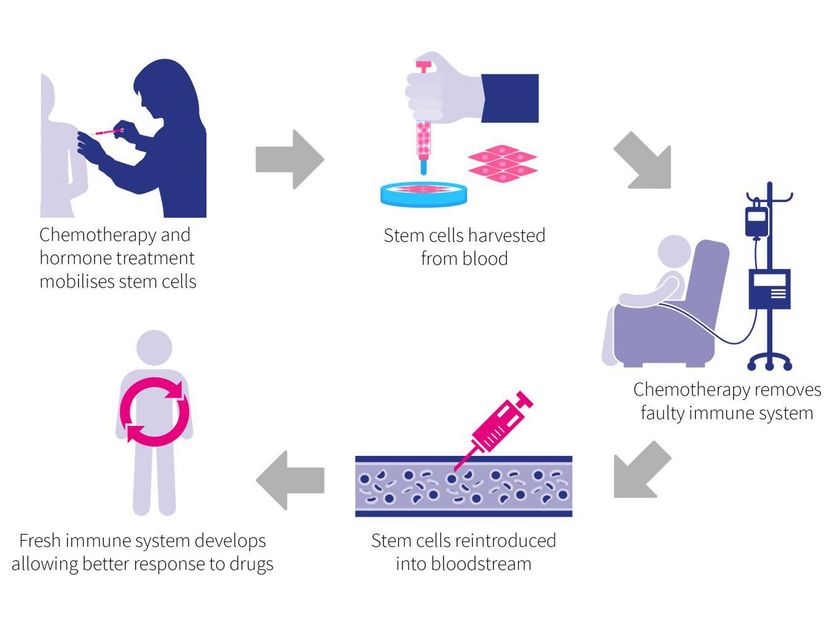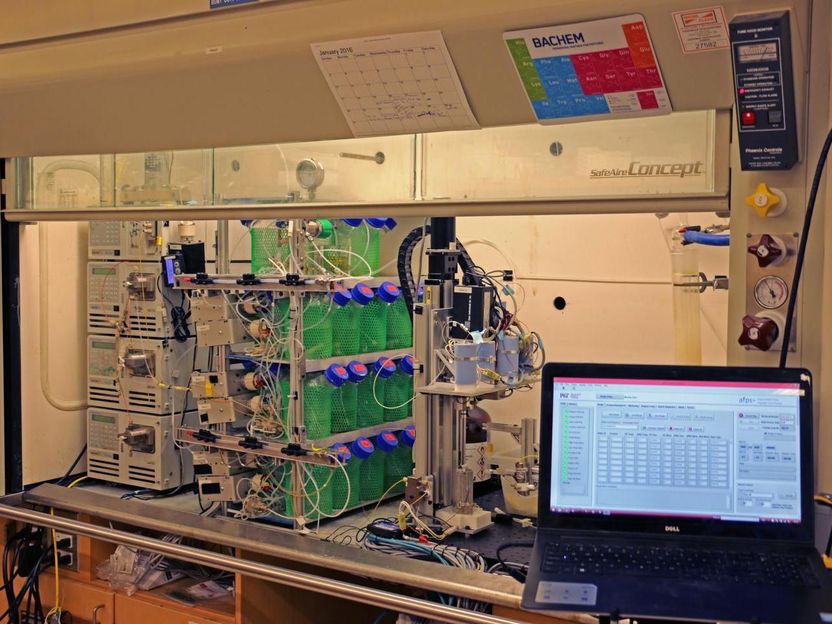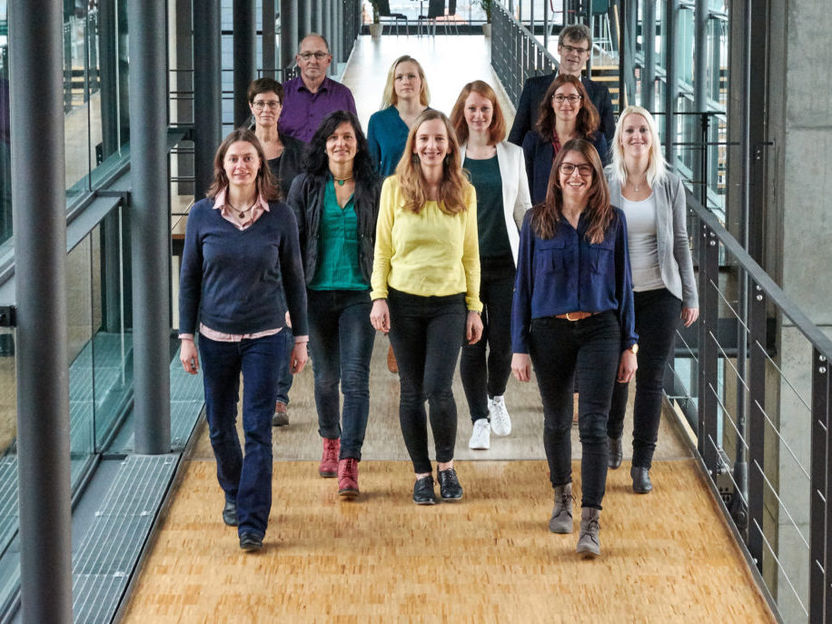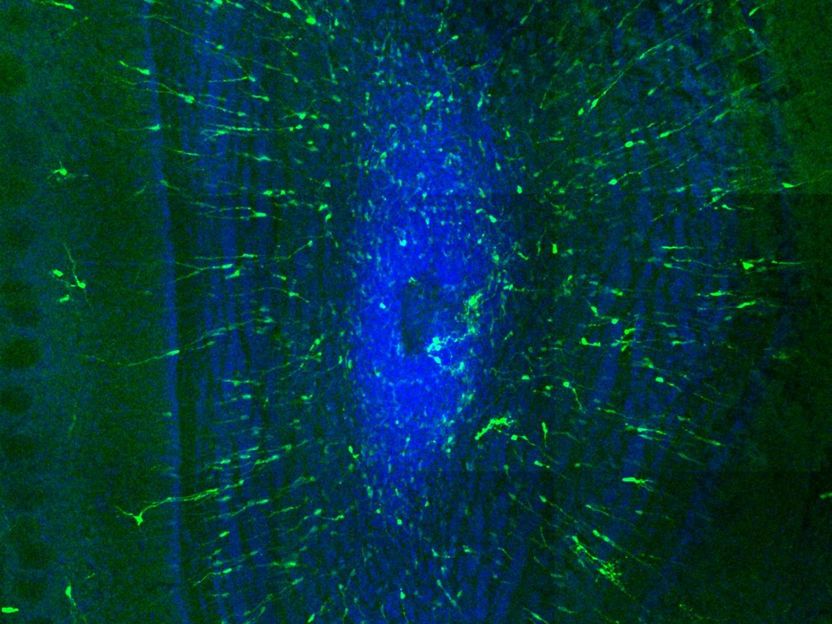How bacteria can be "tamed" for sustainable plastics production
Research team at Giessen University develops new system for tailored control of gene expression
Many bacteria have great potential for biotechnology, for example in the production of bioplastics or other industrially useful materials. But it is often difficult to "tame" the wild types of these biotechnologically interesting bacteria, i.e. to get them to produce the desired substance. The key to taming bacteria lies in controlling their gene expression, particularly those genes that are important for the production and degradation of the desired substance. A research team led by Dr. Matthew McIntosh at the Institute of Microbiology and Molecular Biology at Justus Liebig University Giessen (JLU) has now developed a new system for the tailored control of gene expression, for which a patent application is already pending. Gene expression controls the new synthesis of proteins that perform specific tasks in the cell.

The wild-type cells of the bacterium Rhodobacter sphaeroides (left figure) were modified using the new technique ACIT to increase cell size. In the enlarged cells (figure right), the accumulation of the deposited energy storage molecule polyhydroxybutyrate (PHB), which serves as the basis for biodegradable plastics, is visible in yellow.
Matthew McIntosh
The new system is called ACIT (Alphaproteobacteria chromosomally integrating transcription-control cassette). At the heart of this invention is the ability to rapidly adapt gene control mechanisms to specific bacteria and growth conditions. "Some of the known systems for controlling gene expression can be used in model organisms such as E. coli after years of fine-tuning, but do not work well in many wild types of biotechnological interest," said Dr. Matthew McIntosh. "Typical problems include weak expression or uncontrolled expression." However, the ACIT system also provides a basis for controlling gene expression in less studied bacteria.
In the study, the research team shows, among other things, that the ACIT system makes it possible to elongate a bacterial cell hundreds of times, creating more storage space for useful polymers that accumulate in the cell. For example, the fully biodegradable energy storage molecule polyhydroxybutyrate (PHB), which is used in industry as a basis for biodegradable plastic, can be produced cheaply. Controlled gene expression is useful for a variety of other biotechnological applications, as well as for studying gene regulation and function in bacteria.
Dr. Matthew McIntosh has been conducting research at JLU since 2018. His team focuses on constructing novel regulatory pathways that can optimize gene expression in any bacterium of interest, particularly for fermentation. In addition, current research projects focus on engineering microbes capable of degrading waste or other cheap biomass sources - for example, agricultural waste, waste paper or algae - to produce low-cost polymers useful to industry.
Note: This article has been translated using a computer system without human intervention. LUMITOS offers these automatic translations to present a wider range of current news. Since this article has been translated with automatic translation, it is possible that it contains errors in vocabulary, syntax or grammar. The original article in German can be found here.
Original publication
Other news from the department science

Get the life science industry in your inbox
By submitting this form you agree that LUMITOS AG will send you the newsletter(s) selected above by email. Your data will not be passed on to third parties. Your data will be stored and processed in accordance with our data protection regulations. LUMITOS may contact you by email for the purpose of advertising or market and opinion surveys. You can revoke your consent at any time without giving reasons to LUMITOS AG, Ernst-Augustin-Str. 2, 12489 Berlin, Germany or by e-mail at revoke@lumitos.com with effect for the future. In addition, each email contains a link to unsubscribe from the corresponding newsletter.
Most read news
More news from our other portals
Last viewed contents
ArGEN-X advances third therapeutic antibody program into preclinical development

Stem cell transplants to be used in treating Crohn's disease - Growing a new immune system
New triggerable, tough hydrogels could make drug-releasing systems safer
List_of_subjects_in_Gray's_Anatomy:_XI._Splanchnology
Self-surgery
Genetic Technologies grants third license to Monsanto
Kyasanur_forest_disease

New technology offers fast peptide synthesis
Chemotherapy timing is key to success - Nanoparticles that stagger delivery of 2 drugs knock out aggressive tumors in mice

New financing round at oncgnostics GmbH close
Night_owl_(person)























































